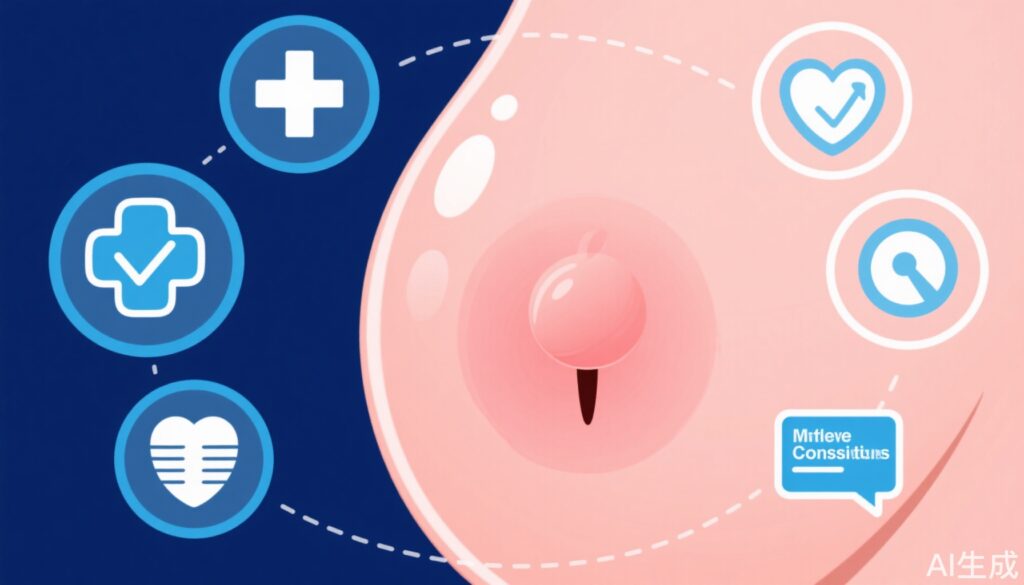Introduction
Inverted nipples, a condition where the nipple retracts inward instead of protruding outward, are a common yet often misunderstood aspect of breast health. While typically benign, this condition can sometimes point to underlying breast issues that warrant medical attention. This article aims to shed light on the causes, potential health implications, and management strategies for inverted nipples, empowering individuals with knowledge to maintain their breast health.
What Causes Inverted Nipples?
Inverted nipples occur when the tissues and structures beneath the nipple, such as milk ducts or connective tissue, pull the nipple inward. There are several reasons this might happen: 1. **Genetic Predispositions:** Some individuals are born with inverted nipples due to genetic factors affecting nipple and duct development. 2. **Developmental Issues During Puberty:** Nutritional deficiencies or hormonal imbalances during puberty can impact breast and nipple development, possibly leading to inversion. 3. **Breast Surgeries:** Procedures like breast augmentation or reduction can alter the surrounding tissue, sometimes resulting in nipple inversion. 4. **Breast Conditions:** Chronic conditions like mastitis (breast infection) or fibrocystic breast changes can cause scarring or tissue changes that lead to inversion.
Inverted Nipples and Breast Health
While many cases of inverted nipples are harmless and purely a cosmetic concern, others may signal underlying health issues, such as: 1. **Mastitis:** This is an infection of breast tissue, often seen in breastfeeding women, that can cause swelling, inflammation, and nipple inversion. 2. **Fibrocystic Changes:** These benign changes in breast tissue can be associated with discomfort and nipple changes. 3. **Breast Cancer:** Although rare, nipple inversion can sometimes be a symptom of breast cancer, especially if it occurs suddenly and is accompanied by other symptoms like discharge or a palpable lump.
Preventive Measures and Management
While not all causes of inverted nipples are preventable, maintaining overall breast health is achievable through regular self-examinations, a balanced diet, and appropriate physical activity. Additionally, wearing supportive bras and avoiding excessive compression of the breasts can help maintain nipple orientation. For those seeking treatment, options include: – **Non-Surgical Treatments:** Techniques such as gentle manipulation or suction devices to encourage the nipple to protrude. – **Surgical Interventions:** Certain procedures can correct persistent or severe cases of nipple inversion. It is essential to consult a healthcare provider to determine the best course of action.
Conclusion
Inverted nipples are generally benign but can sometimes indicate underlying breast conditions that require attention. Understanding the causes and associated risks is crucial for early detection and management. Regular breast health check-ups and consultations with healthcare professionals ensure timely intervention and peace of mind regarding this common condition.




You have noted very interesting points! ps decent web site.